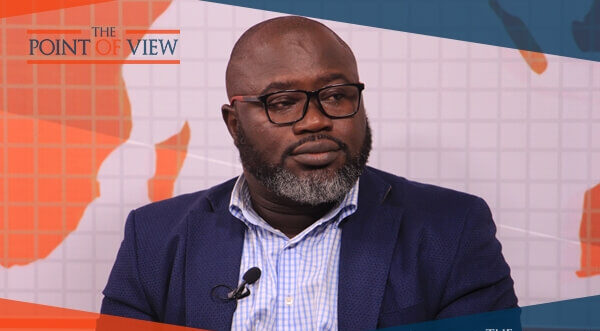- Over 5,400 schools still under trees
- Some 4,000 new public JHSs needed for primary graduates to transition
Government needs to completely remove the cap on the Ghana Education Trust Fund (GETFund)’s receivables since the restriction has denied the statutory funding vehicle for educational projects and programmes of enough resources to complete existing projects and embark on new ones at the basic level.
Civil society organisations including Africa Education Watch (Eduwatch) believe that the 25-percent cap placed on the GETFund since 2017 is placing undue pressure on the fund and stifling the development of education infrastructure.
In similar vein, the Coalition against the Privatization and Commercialization of Education (CAPCOE), in partnership with OXFAM as part of the Education Spike Campaign, is also asking that portion of the GETFund should be set aside to finance basic education infrastructure, especially the construction of new Junior High Schools (JHS) and schools under trees within the next five years.
With current statistics showing that there are some 5,400 schools under trees, it said urgent infrastructure is required and that 4,000 JHSs are needed for pupils graduating from public primary schools. Without new JHSs infrastructure, it fears for the education of pupils, especially in remote areas.
Executive Director, Eduwatch, Kofi Asare, indicated that the capping of GETFund receivables has reduced allocation by about 70 percent and a portion of the remaining has been securitized for a fixed-term bond programme at 20.5 percent coupon rate which is very costly to serve.
He said the policy decision has reduced the about GH¢5 billion that could have been allocated to GETFund to about GH¢1.4 billion in 2021 for instance. To worsen matters, 60 percent of the allocated GH¢1.4 billion was allocated for debt servicing with very little remaining for basic education infrastructure and other critical investments.
He therefore advised that until there is an amendment of the act to reduce the cap and free some resources to GETFund for rapid basic education infrastructure development, basic education will continue to suffer.
“With the major challenges in the education sector being finance, infrastructure and quality services, the sector spends about 93 percent of its total budgetary allocation on compensation and good & services, leaving less than seven percent for capital expenditure (CAPEX) used to finance infrastructure development.
Out of the GH¢1 billion CAPEX expenditure in 2019, a whopping 42 percent went to SHS infrastructure with only 3.4 percent to JHS. In that same year, only 100 primary schools and 240 JHSs across the country received infrastructure support.
According to the Mr. Asare, if Ghana continues expanding JHS infrastructure at the current rate, it will take 26 years to provide every primary school with a JHS, and Ghana would have missed out of the Sustainable Development Goal four (SDG4), target of ensuring all children enroll and complete the full course of basic education by 2030.
Expenditure on basic education has declined by 18 percentage points between 2008 and 2018 to the advantage of other sub sectors, especially secondary education. For instance, while basic education expenditure as a percentage of total education expenditure reduced from 55.7 percent in 2008 to 37.8 percent in 2018, over the same 10-year period, secondary education’s share of the education expenditure increased from 9.8 percent to 25 percent, he said.
He added that beyond addressing the GETFund challenge, moving forward, government must spike up the quality of public basic education through general improvement in its investments by specifically exploring other reliable funding to support infrastructure, explore cheaper technologies in building schools to improve spending efficiency in infrastructure and increase basic education share of the education sector expenditure to 50 percent.
About 4,000 JHS infrastructure deficit
The lack of public JHSs in about 25 percent of primary schools is a major driver of the demand for private education affecting the ability of public primary graduates to transition to public JHSs. According to the Ministry of Education, there are a total of 15,391 primary and 11,383 JHS in the country, meaning some 4,008 primary schools do not have access to JHSs.
However, the situation is worse in rural districts like Sene East and Nkwanta where 65-70 percent of primary schools do not have access to a JHS, a phenomenon that has led to high rates of school dropout, especially for children whose parents cannot afford a private JHS or girls who cannot walk for up to 12 miles to access the nearest public JHS.
This defeats the compulsory universal basic education policy of government which seeks to ensure all children of school going age enroll and complete the full course of kindergarten, primary and JHS education.
Over 5,000 school under trees and sheds
According to the MoE, there are 5,403 schools under trees, sheds, and dilapidated structures across the country without adequate desks and ventilation. These schools, according to the CSOs are driving demand for low-cost and sub-standard private schools.
The Ghana Education Service and VALCO Trust Fund have launched an initiative requiring GH¢3.5 billion to construct all 5403 schools over a five-year period. However, only two percent of the funding is presently available. There is the need therefore to find means of exploring reliable funding to support the VALCO Trust Fund, the CSO stressed.
Executive Director, Eduwatch, Kofi Asare










